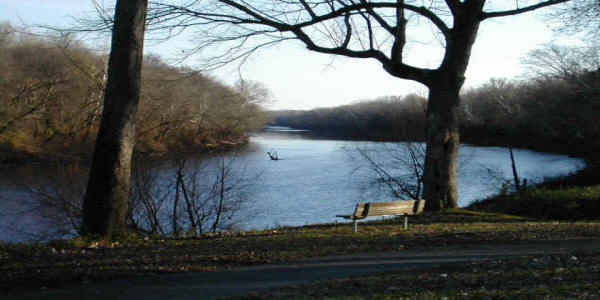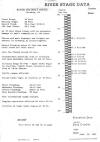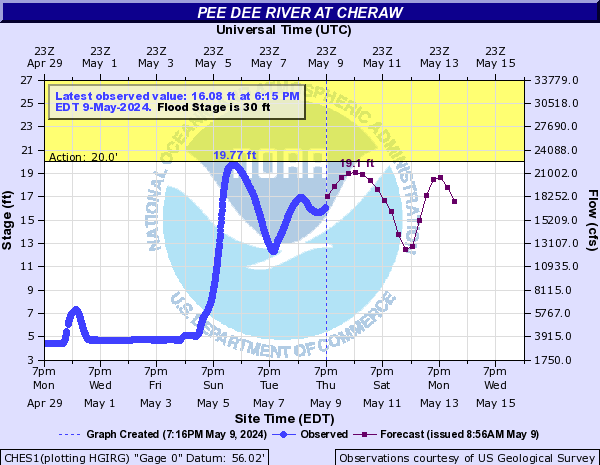At Cheraw, South Carolina

| The Pee Dee River begins as a small spring (now under a parking
lot) adjacent to the Green Park Inn in Blowing Rock, North Carolina.
It flows generally to the southeast through western North Carolina
as the Yadkin River and is dammed in several places. Just east of
Charlotte, NC, at the confluence with the Rocky River (or the
Uwharrie River, this is the subject of some debate), it takes on the
name Pee Dee River, and is once again dammed at Blewett Falls Lake.
Below this impoundment, the Pee Dee flows freely into South Carolina
and to Winyah Bay at Georgetown.
In South Carolina, the main stem of the river is known as the Great Pee Dee River to differentiate it from its much smaller tributary the Little Pee Dee River. The Pee Dee is a large river which flows through bottomland forests, cypress swamps, and eventually into the coastal flats. The extreme lower Pee Dee River flows through the region where rice plantations were the predominant economic engine of South Carolina before the Civil War. A pleasant tradition (though not true) has developed that the eminent American composer Stephen Foster (1826-1864) toured South Carolina in 1851, and that while visiting friends at a plantation near the Pee Dee river, became quite entranced with the natural beauty of that waterway. Consequently, he declared that the Pee Dee would appear within the lyrics of his next song. After returning to his home in Pennsylvania, he composed a piece entitled, "Old Folks at Home." The first line initially did read, "Way down upon de PeDee ribber" but the music publisher (Firth, Pond, and Company) demanded that the name be changed to Suwannee river. The truth is Foster never visited South Carolina, much less the Pee Dee River. It is generally accepted that he composed the lyrics after hearing another song, "Old Pee Dee," and wrote the quatrain that included its name. Always a perfectionist, he decided to use an original name of a southern river that was not taken from another song. His brother was enlisted for the task and, after perusing a marine atlas of North America, came upon the name Suwannee. The rest is history! --edited from the "Canoe Camping--USA" page. |
 |
 |
 |
|||
|
Click on any of the thumbnails to enlarge an image. |
|||||
 |
Historical marker located at Laney Landing in Cheraw. More information from the marker is shown below. |
 |
|||
|
Click here to go to the historical pictures page for the river landing. |
|
||||





